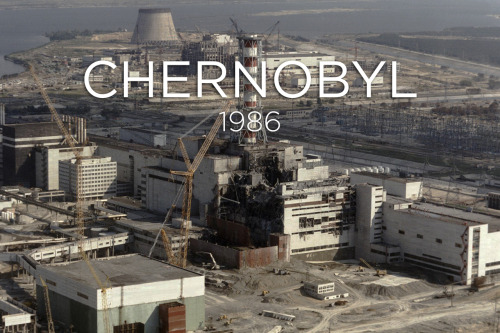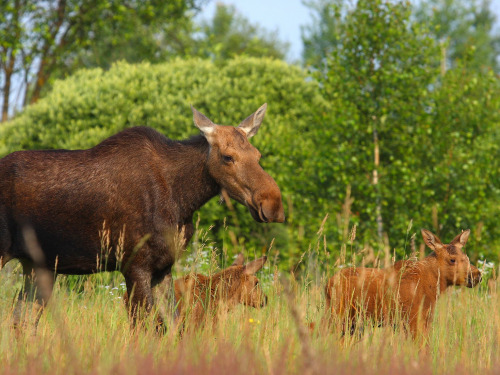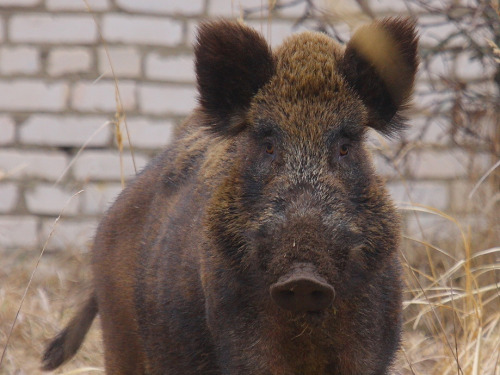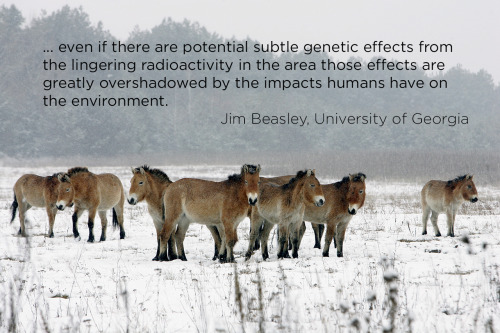What´s New About The New Science Of Cities?

What´s new about the new science of cities?
More Posts from Dotmpotter and Others

Did you know that 80% of all terrestrial plants and animals live in forests? That’s why the Global Goals for Sustainable Development, adopted at the United Nations in New York in September, seek to protect forests and biodiversity. Which Global Goal means the most to you? See the full list here: www.un.org/sustainabledevelopment
Robot Taxi: autonomous mobility for senior citizens in rural areas
Autonomous mobility. A future market, everyone is targeting: Google, Uber, Tesla, Apple, Baidu and a bunch of old-econmoy automotive players. Everybody wishes to triumph with its technology. But have you heard of :DeNA?
The Japanese tech company (originally a mobile gaming company with a net worth of over $1 billion) wants to develop the best smartphone-driven orchestration software for a fleet of robocars. :DeNA just started a new company called “Robot Taxi”, with - not surprisingly - a lucrative future robo-taxi market in mind. The nice thing is, however, that they initially don’t aim for the young urban metropolitan-elite, but rather focus on rural areas and senior citizens. Gizmodo has the story:
Today, it was announced that road tests will begin next year in Kanagawa prefecture, south of Tokyo. Fifty people will travel in trips of two miles from their homes to grocery stores, with a Robot Taxi employee on board as a safety precaution, the Wall Street Journal reports. And the demographics the company is targeting? Senior citizens, and people with no access to public transportation.
Certainly, Japan has a demographic problem and the societal views on robots differ immensely to the rest of the world. But it’s refreshing to see, that (profit oriented) companies exist, which are working on future services with people in mind.
[Robot Taxi] [via gizmodo] [read more about DeNA]
Making an impact
ESA - Clean Space Programme logo. 25 September 2015 When a rocket is launched into space it crosses all layers of the atmosphere and interacts with them. How much impact does a launch have on the atmosphere and can we quantify the effect in such a way that we can take mitigation measures? These are only a few of the questions raised by the Clean Space AtILa (Atmospheric Impact of Launchers) project. Neil Murray explains: “It is difficult to use computer modelling to precisely monitor what happens when a rocket is launched as the size of the plume is far smaller than the scale of the climate models that we use to model the atmosphere”.
Picture perfect liftoff
Therefore two strategies were worked out to model the impact, one started from the size of the plume and this was allowed to develop over time and space to the size of the climate model and used as the boundary conditions of the climate model. Another strategy started from the size of the larger model and introduced sub-grid models which modelled the plume within the climate model grids. Both models gave surprisingly similar results. So far it has been thought that chlorine, which is converted from the oxidizer (ammonia perchlorate) in the solid booster fuel mixture, has had the main effect on ozone depletion in the immediate area where the plume is emitted.
Computations conducted at ONERA using the CEDRE code
The latest studies have shown that alumina particles, i.e., oxidised aluminium, which is also present in the solid rocket fuel, may also have a significant ozone depletion effect depending on the particle size. “If the particles are on the micrometer scale they would quickly fall out of the sky and have little impact on the atmosphere. However, the smaller the particles, the higher their combined surface area and the longer they remain suspended in the air, which means that their potential catalytic effect in ozone reduction could also be much higher.” Therefore it is imperative that quantitative data is collected to be able to accurately measure and predict the impact by mathematical models.
Computations conducted at ONERA using the CEDRE code
The first step towards quantitative data is the kick-off of an activity organised in cooperation with DLR whereby a solid rocket motor model in a wind tunnel will be used to simulate the evolution of particles in a representative rocket chamber and to then interpolate this to the conditions at launch. From these measurements accurate models will be developed for predicting the development of alumina particles under real launch conditions. So why not just use real launch data? “It is not that easy to make these measurements during a real launch and so far no data has been collected for European launchers. Up to now we have mainly been relying on data measured by NASA during launches in the 1990s, however, the representativeness of this data with respect to European launchers is questionable. This ultimately leaves us with the task of somehow collecting such flight data and it is something that we are discussing at length.“
Ariane 5 ECA V184 climbout
"Even when we are able to make real-time measurements during a launch it still is a large task to interpret this data correctly and extrapolate this to all launches, as daily changes in the atmosphere and the time of the launch are just a few parameters that severely influence the effect. Luckily we are working with some of Europe’s experts in climatology!” The AtILa project aims to understand the impact of launching its rockets into space by modelling the rocket plumes from their origin in the rocket chamber up to their impact on a global scale using climate models. This is one of the projects that ESA carries out under the Clean Space initiative which has carried out life cycle assessments for the space industry in order to monitor the effect of each space project on the environment. Implementing eco-design strategies into every phase of a space project is the ultimate aim of this initiative. ESA links: Life cycle assessment training at ESA: http://www.esa.int/Our_Activities/Space_Engineering_Technology/Clean_Space/Life_Cycle_Assessment_training_at_ESA Virtual rocket launches will probe atmospheric effects: http://www.esa.int/Our_Activities/Space_Engineering_Technology/Clean_Space/Virtual_rocket_launches_will_probe_atmospheric_effects Considering hydrazine-free satellite propulsion: http://www.esa.int/Our_Activities/Space_Engineering_Technology/Clean_Space/Considering_hydrazine-free_satellite_propulsion ‘Green’ satellite fuel designed to make space safer: http://www.esa.int/Our_Activities/Space_Engineering_Technology/Green_satellite_fuel_designed_to_make_space_safer About Clean Space: What is Clean Space?: http://www.esa.int/Our_Activities/Space_Engineering_Technology/Clean_Space/What_is_Clean_Space Why is it needed?: http://www.esa.int/Our_Activities/Space_Engineering_Technology/Clean_Space/Why_is_it_needed What are its objectives?: http://www.esa.int/Our_Activities/Space_Engineering_Technology/Clean_Space/What_are_its_objectives Images, Text, Credits: ESA/CNES/ARIANESPACE/Photo Optique Vidéo CSG/Service POV du CSG. Best regards, Orbiter.ch Full article
When Firms Become Persons and Persons Become Firms: outstanding lecture

UC Berkeley Political Scientist Wendy Brown came to the London School of Economics last week to discuss her book Undoing the Demos, and her lecture (MP3) is literally the best discussion of how and why human rights are being taken away from humans and given to corporations.
Brown looks at the human rights enumerated in the US Bill of Rights, and how they have been interpreted in successive Supreme Court rulings like Hobby Lobby (corporations are people whose religious freedom entitles them to deny contraception to their workers) and Citizens United (corporations are people and have the free speech right to buy politicians). She suggests that these have been misread as merely conservative/business-oriented thinking gaining influence, and that rather, they are best understood as an ongoing project that grants personhood to companies at the expense of real people.
Brown speaks for more than an hour with almost no poli-sci/econ jargon, building elegant, beautiful arguments that should be accessible to anyone. If you listen to anything this weekend, make it this.
Neoliberal rationality — ubiquitous today in statecraft and the workplace, in jurisprudence, education, and culture — remakes everything and everyone in the image of homo oeconomicus. What happens when this rationality transposes the constituent elements of democracy into an economic register? In vivid detail, Wendy Brown explains how democracy itself is imperiled. The demos disintegrates into bits of human capital; concerns with justice cede to the mandates of growth rates, credit ratings, and investment climates; liberty submits to the imperative of human capital appreciation; equality dissolves into market competition; and popular sovereignty grows incoherent. Liberal democratic practices may not survive these transformations. Radical democratic dreams may not either.
In an original and compelling theoretical argument, Brown explains how and why neoliberal reason undoes the political form and political imaginary it falsely promises to secure and reinvigorate. Through meticulous analyses of neoliberalized law, political practices, governance, and education, she charts the new common sense. Undoing the Demos makes clear that, far from being the lodestar of the twenty-first century, a future for democracy depends upon it becoming an object of struggle and rethinking.
Undoing the Demos: Neoliberalism’s Stealth Revolution [Wendy Brown/Zone Books]
When Firms Become Persons and Persons Become Firms: neoliberal jurisprudence in Burwell v. Hobby Lobby Stores [LSE]
MP3

World Pulse, a magazine and online media nonprofit, is a place for women around the world to report on issues that are important to them.
The goal is to give all women a voice that will in turn help them improve their communities and their lives.
"We’re not about professional journalists, we’re more about that emerging woman leader who’s just coming online and has a powerful contribution to make," says founder Jensine Larson.
World Pulse’s “web” of women grows (PBS NewsHour)

A Smart Menstrual Cup That Tracks Your Period And Makes Sure You’re Healthy http://ift.tt/1Ltl8JD
The study authors have calculated the cost of the “lost ecosystem services value” our planet has suffered in the last decade and a half. According to their calculations, the loss due to land degradation averages US $43,400 to $72,000 per square km, some US $870 to $1,450 per person, globally each year. The percentage of the world’s land affected by land degradation has grown a lot in the last decades – it has doubled between the late 1970s and the early 2000s. And the process is far from its end.
“This study by ELD shows the immediate and global impact of land degradation and highlights that actions to tackle it pay off,” Karmenu Vella, European Commissioner for Environment, Fisheries and Maritime Affairs commented on the paper.
“Increased land degradation is also one of the factors that can lead to migration and it is being exacerbated by climate change. On our planet, the area affected by drought has doubled in 40 years. One third of Africa is threatened by desertification. As President Juncker said in his State of the Union speech last week, climate refugees will become a new challenge – if we do not act swiftly.”







On April 26, 1986, a power surge caused an explosion at the Chernobyl Nuclear Power Plant near Pripyat, Ukraine. A large quantity of radioactive material was released.
On May 2, 1986, the Soviet government established a “Zone of Alienation” or “Exclusion Zone” around Chernobyl – a thousand square miles of “radioactive wasteland.” All humans were evacuated. The town of Pripyat was completely abandoned.
But the animals didn’t leave. And a new study, published this month in Current Biology, suggests they are doing fine. “None of our three hypotheses postulating radiation damage to large mammal populations at Chernobyl were supported by the empirical evidence,” says Jim Beasley, one of the researchers.
In fact, some of the populations have grown. These photos (mostly taken by Valeriy Yurko) come from the Belarusian side of the Exclusion Zone, and area called the Polessye State Radioecological Reserve. Kingfisher, elk, boar, baby spotted eagles, wild ponies, moose, rabbits, and wolves all make their home in the park. In some ways, human presence is worse for wildlife than a nuclear disaster.
Image credits:
1986 Chernobyl - ZUFAROV/AFP/Getty Images
Wildlife photos - Valeriy Yurko/Polessye State Radioecological Reserve
Ponies in winter - SERGEI SUPINSKY/AFP/Getty Images

Today I am drawing Christmas card designs. For robots. #christmascard #christmas #xmas #merrychristmas #robot #robotart #art #illustration #instaartist #instaart #jonturner

Map of Australia with a so called ‘remoteness index’, illustrating how far locations in Australia are from population centers [999x766] CLICK HERE FOR MORE MAPS! thelandofmaps.tumblr.com
-
 causticgauze liked this · 9 years ago
causticgauze liked this · 9 years ago -
 aykutbi liked this · 9 years ago
aykutbi liked this · 9 years ago -
 pouty-brat liked this · 9 years ago
pouty-brat liked this · 9 years ago -
 way--laid liked this · 9 years ago
way--laid liked this · 9 years ago -
 dotmpotter reblogged this · 9 years ago
dotmpotter reblogged this · 9 years ago -
 alexandrevolpi liked this · 9 years ago
alexandrevolpi liked this · 9 years ago -
 azulelcieloo liked this · 9 years ago
azulelcieloo liked this · 9 years ago -
 armyofmasturbators liked this · 9 years ago
armyofmasturbators liked this · 9 years ago -
 point-of-origin liked this · 9 years ago
point-of-origin liked this · 9 years ago -
 quidtum liked this · 9 years ago
quidtum liked this · 9 years ago -
 talishita liked this · 9 years ago
talishita liked this · 9 years ago -
 slunn liked this · 9 years ago
slunn liked this · 9 years ago -
 bandit1a reblogged this · 9 years ago
bandit1a reblogged this · 9 years ago -
 bandit1a liked this · 9 years ago
bandit1a liked this · 9 years ago -
 turista liked this · 9 years ago
turista liked this · 9 years ago -
 humanscalecities reblogged this · 9 years ago
humanscalecities reblogged this · 9 years ago
